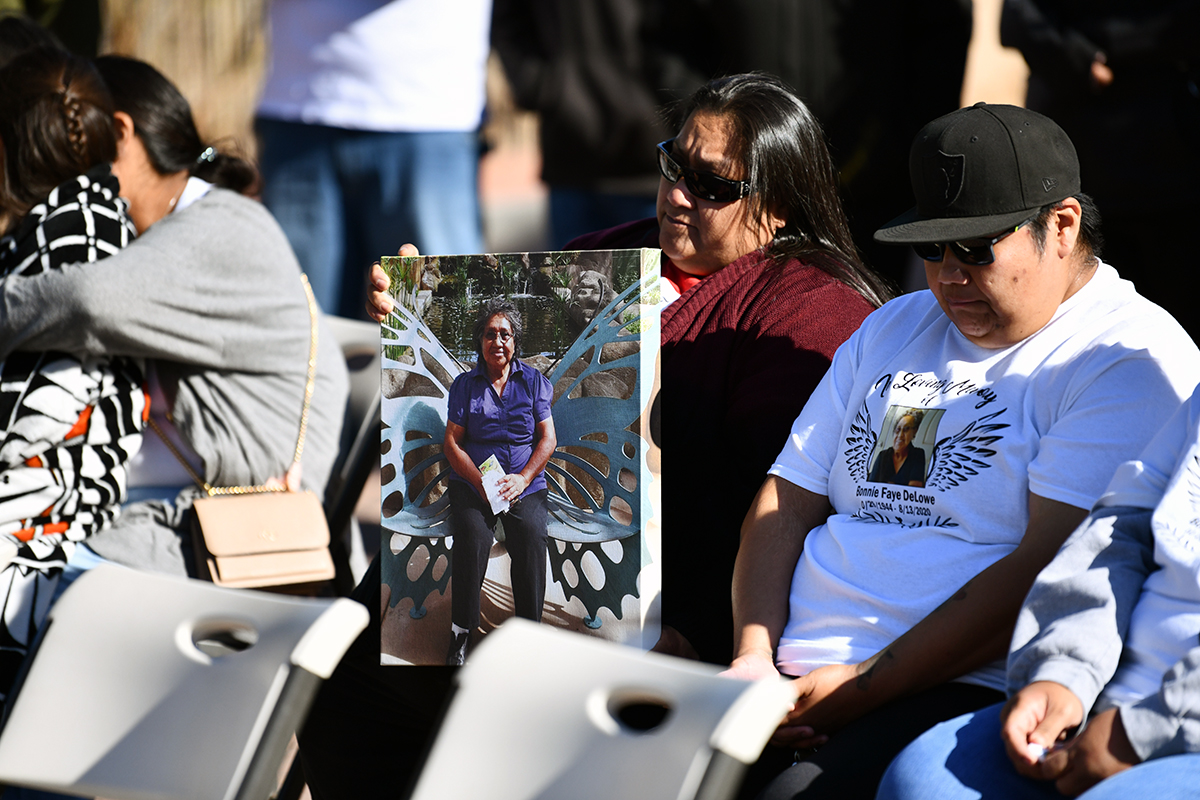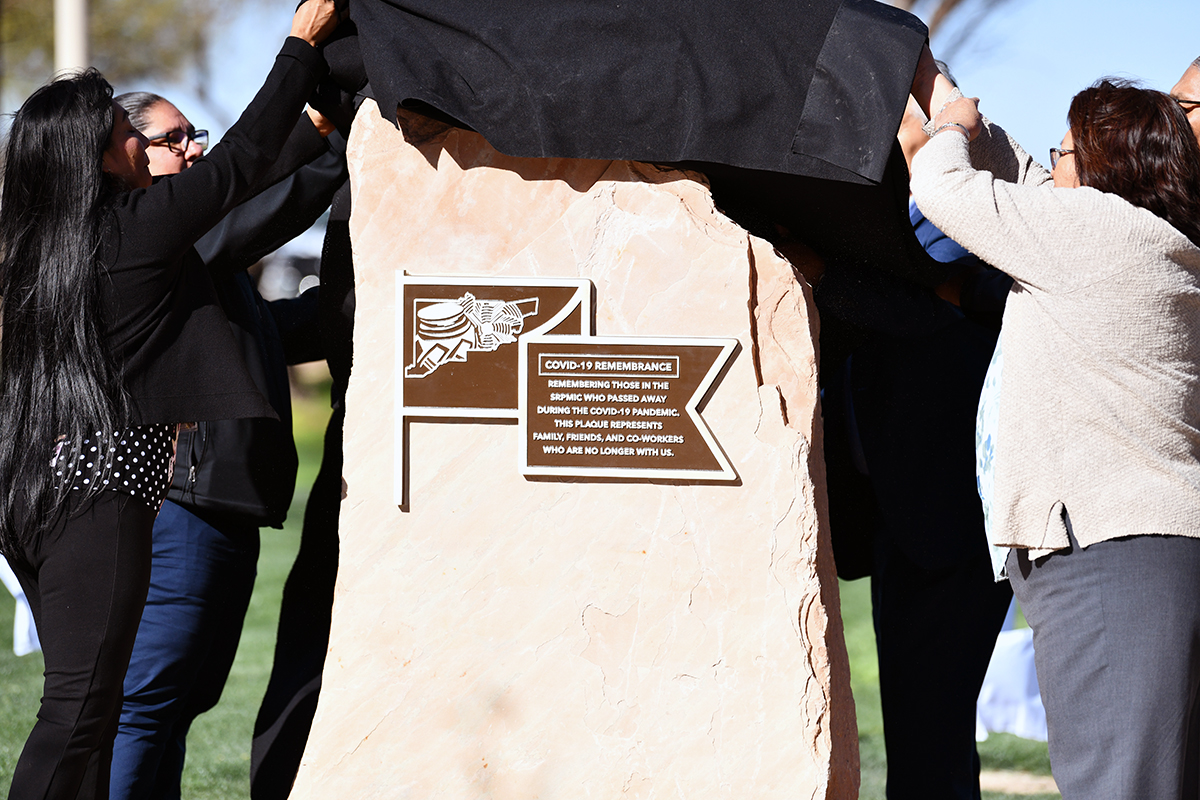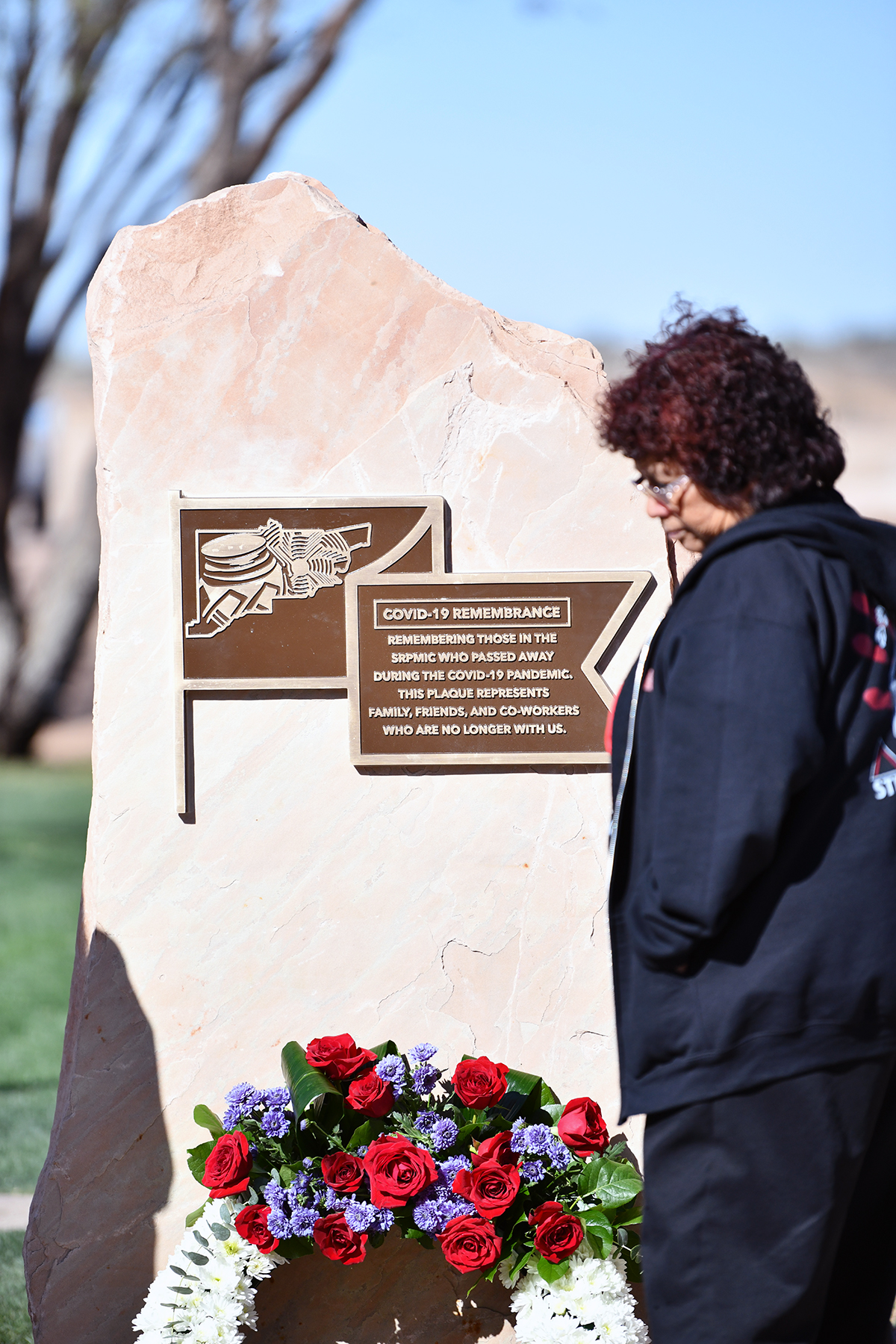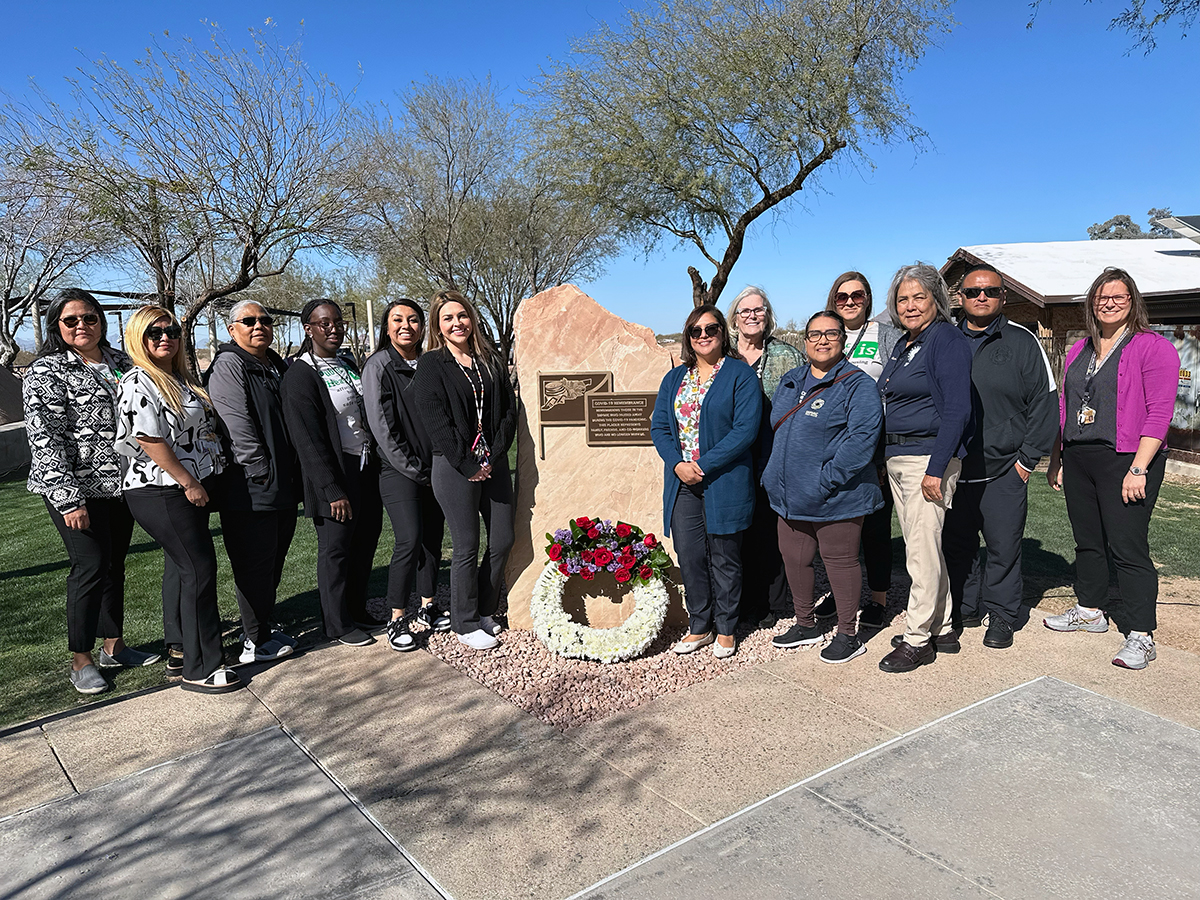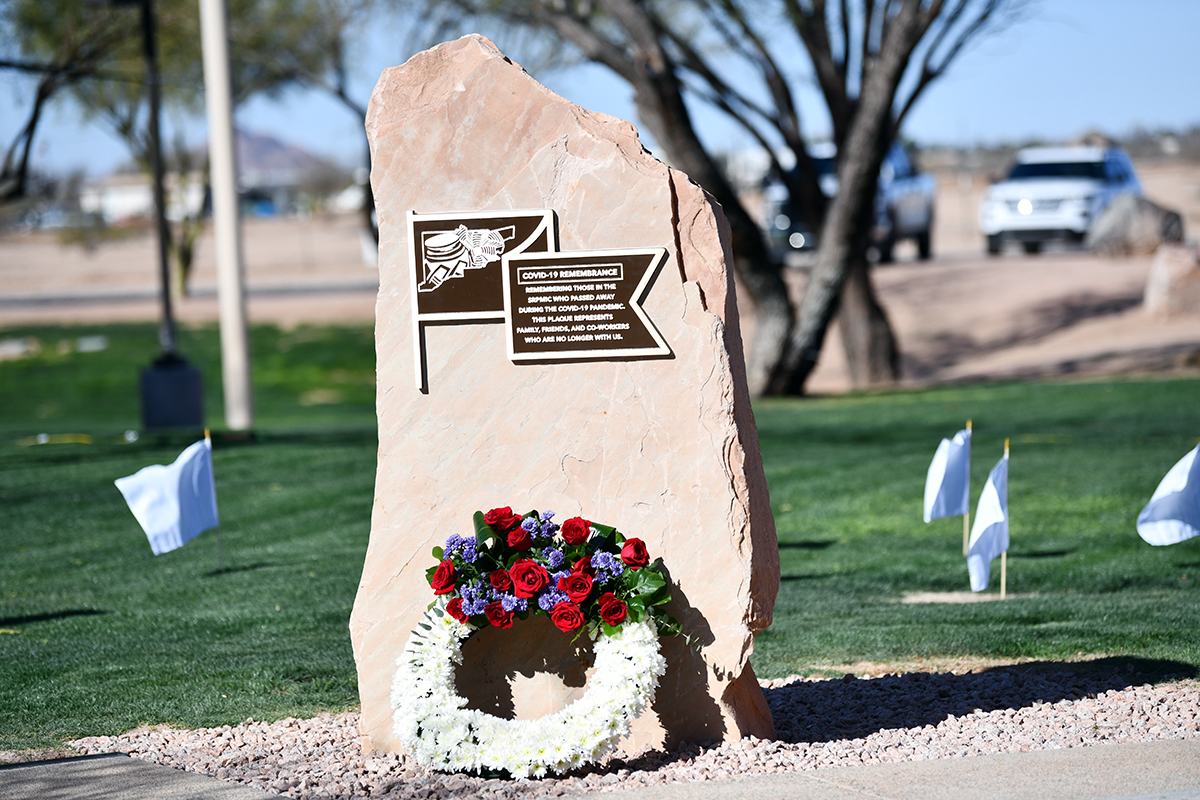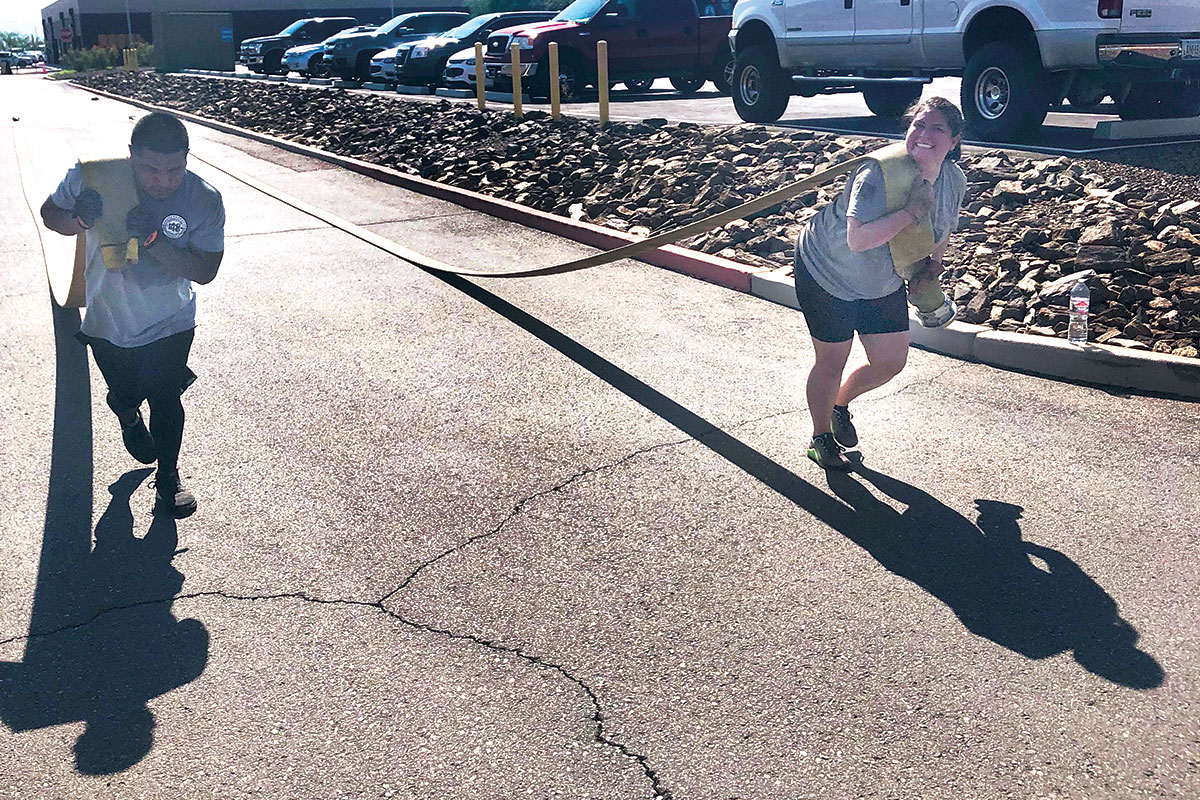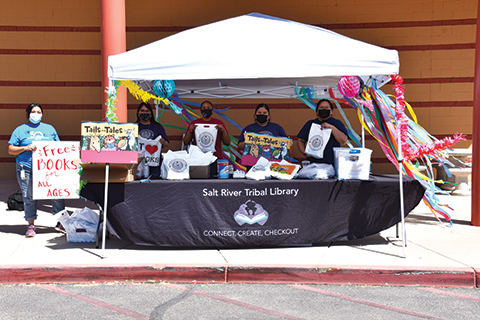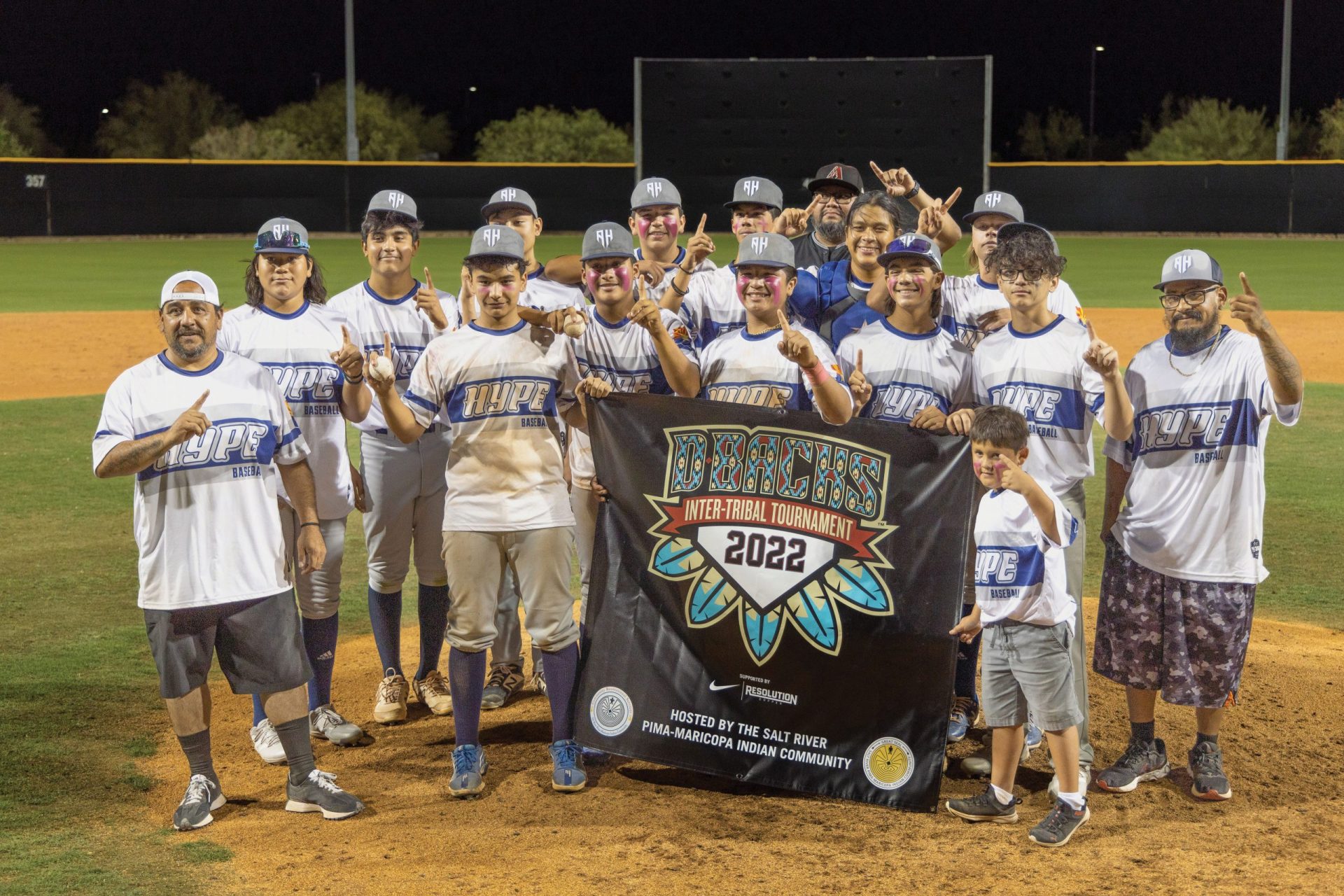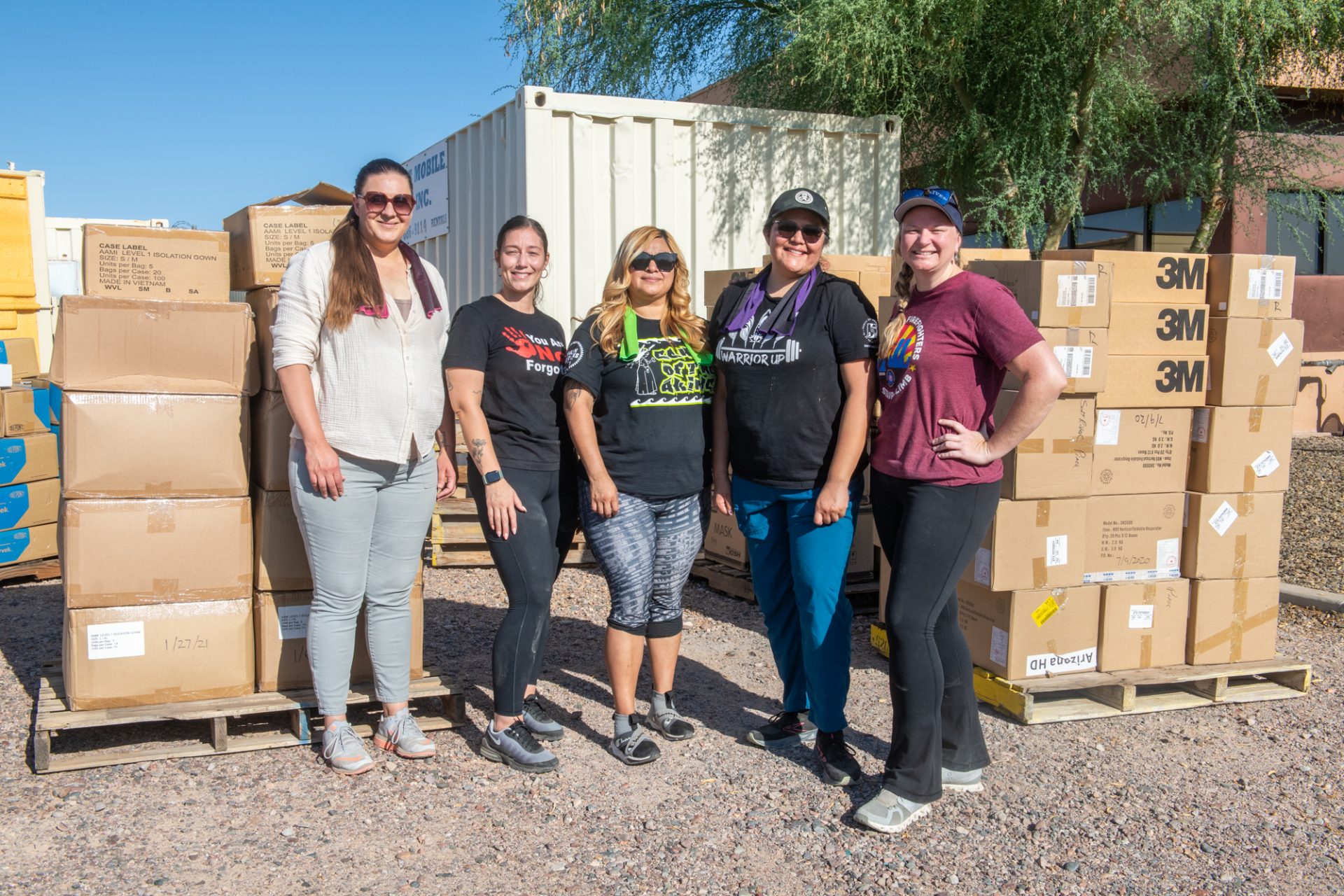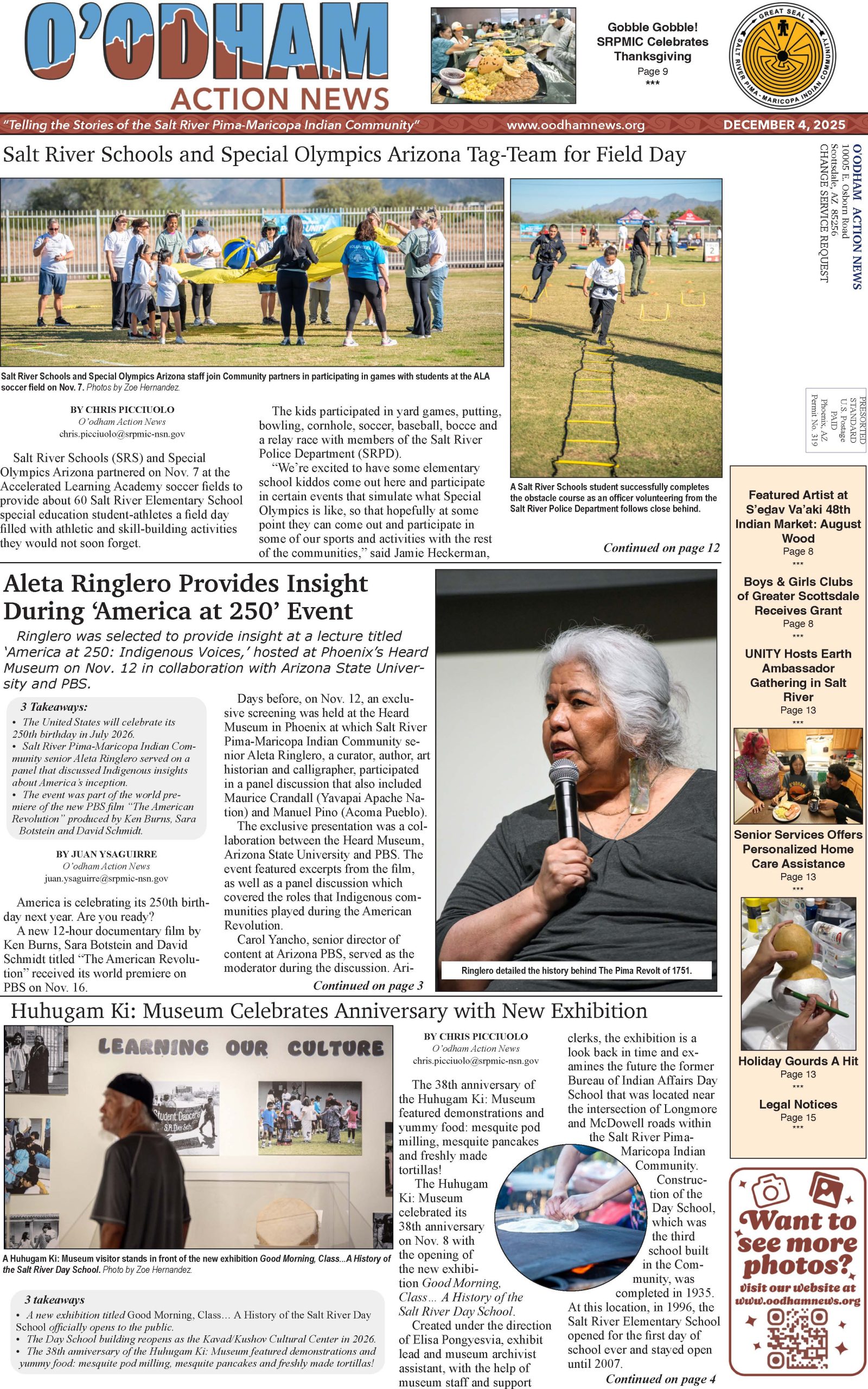VIEWS: 928
April 4, 2025SRPMIC COVID-19 Memorial Unites All
The lasting impacts of the COVID-19 pandemic still linger on in the Salt River Pima-Maricopa Indian Community, as the Community lost nearly 100 members during the pandemic.
To ensure they are never forgotten, on March 18, nearly five years to the date from the worldwide shutdown, the SRPMIC unveiled a COVID-19 memorial in the Two Waters Complex Courtyard.
The memorial plaque reads: Remembering those in the SRPMIC who passed away during the COVID-19 pandemic. This plaque represents family, friends, and co-workers who are no longer with us.
Half a decade ago, the world drastically changed due to the COVID-19 pandemic. On January 20, 2020, the virus was officially declared a public health emergency of international concern. Two months later, the virus caused worldwide shutdown as leaders from across the world collaborated on ways to help end the pandemic.
To date, over 20 million deaths across the world have been caused by the virus. According to a study conducted by the University of Boston in March of this year, approximately 280 deaths still occur per day because of the virus. Comparatively, in 2021, the estimated deaths caused by COVD19 was 5,000 per day.
Emotions were at a high during the memorial ceremony. SRPMIC Council member Jacob Butler served as emcee for the gathering and Vice-President Ricardo Leonard provided the welcoming blessing. During his blessing, Leonard asked for continued blessings to be placed among everyone in the Community. He also asked for the Community to never forget those lost as a result to the virus. “I ask that you help us move forward,” he said.
Following the blessing, SRPMIC President Martin Harvier detailed the timeline of the impact the virus had, specifically in the SRPMIC. “Time seems to heal pain,” he began. “But time is different for all of us. Sometimes pain lingers. The pandemic that we went through, touched every one of us differently,” he said.
During his speech, Harvier recalled in March of 2020 when the Community was shut down and 300-plus white flags were showcased in front of the Huhugam Ki: Museum. “Whether it was a Community member or co-worker, those are some of the things we have to remember,” he said.
The timeline of events he shared included the July 2020 mask mandate, the beginning of the COVID-19 vaccine program in January 2021, as well in March 2022 when SRPMIC ended the public health emergency declaration. “The decisions during that time were made to keep people safe,” he added.
Later, he added how O’odham and Piipaash people gather when a family member passes away and the pandemic sadly denied families that right. “The pandemic prohibited that. Decisions were made that we couldn’t gather. Those were very difficult times. In unveiling this monument, I just hope that this is a place that you can remember and never forget the loved ones that we weren’t able to be there for when those events happened.”
Following his words, Dr. Nancy Mangieri, chief public health officer for the River People Health Center, provided additional insights regarding how the Community rallied together to help save each other.
“The first COVID test occurred on March 9. We had our first positive test on March 24. We had our first death on April 3. 2020 was an incredibly difficult year. It was frightening for all of us. We had no vaccine, and we weren’t sure where COVID was taking us. The Community stood strong, hard decisions were made, families were heartbroken, and we all supported each other from a distance.”
In December of 2020, vaccines were introduced into the Community. In February of the following year, eight additional Community members were lost to the virus as the vaccine rollout was implemented in the Community.
“We had a small team of professionals doing disease investigations, calling people and making sure they had food, shelter, and isolation. I want to thank each and every person for how responsive you were to our calls and how you always followed our recommendations.”
She continued, “It is heartbreaking to talk to someone in the morning and then find out in the afternoon that they passed.”
As she completed her speech, Dr. Mangieri called for the SRPMIC Health and Human Services staff to place a wreath as the foot of the memorial. “The wreath has at least 93 white flowers on it to represent all of the people that we lost. We want you to know that we still remember and want to make sure that we never have to go through this again.”
During the speeches, the family of Bonnie Faye DeLowe (bot) filled the front row of chairs while wearing memorial t-shirts and holding a canvas photo print honoring DeLowe.
Afterwards, Council member Butler shared a part of himself as the ceremony neared its end. “I want to say thank you to those people that stayed working. Thank you to the first responders and medical staff. That’s why we call them heroes. They put themselves after those in need.”
It was during this point of his speech that many attendees began to shed tears.
Later, Butler shared that during the pandemic, one of his sons caught the virus. An emotional Butler recalled that conversation with him and grew emotional at the lectern. Thankfully, his son was okay. “Your time here isn’t promised. Share that time with the ones you love. [The pandemic] showed me that there’s a lot more love here. I saw a lot more people asking each other if they were okay.”
“Let this be a reminder of the gravity of the things that we lost. Thank you again for all being here and honoring those that have passed from this. My heart is with you today and I hope you all go on with your loved ones in your memory and thoughts.”

